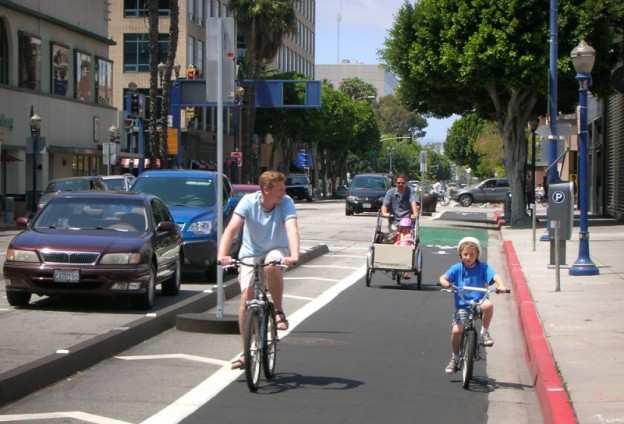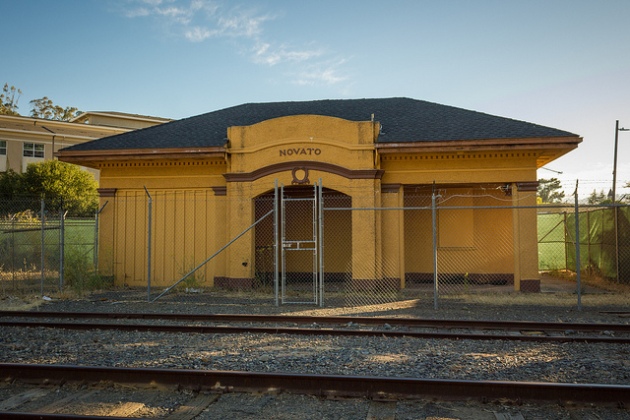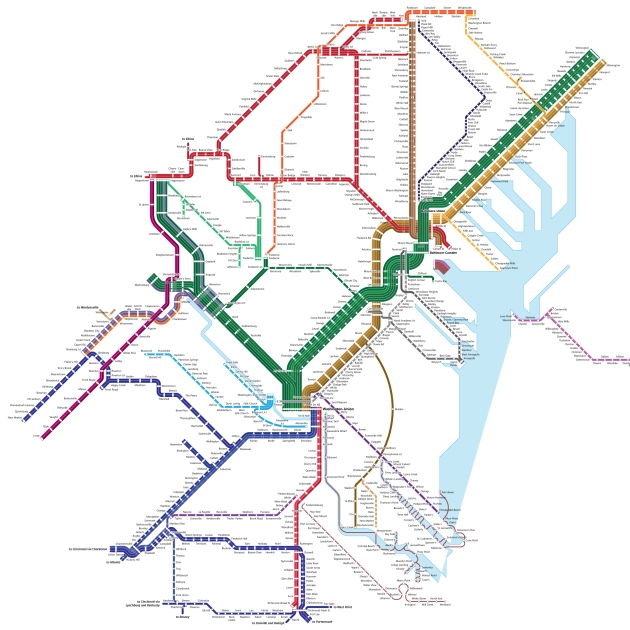The four biggest myths about induced demand
January 4, 2016 1 Comment
This post, by Connor Jones, originally appeared on Urbanist.co. It has been edited to include citations, including the correction of dead links.
Two weeks ago, I laid out the economic argument for induced demand (Jones 2014b): the idea that building more roads does not reduce congestion. It is a simple model that uses concepts from Economics 101 to explain the relationship between road construction and driving behavior.
Even so, this idea, like many associated with new urbanism, challenges the status quo. As such, there’s pushback. To ensure that no falsehoods go unchallenged, I decided to examine the claims in two articles that seek to discredit induced demand as a property. The first is a blog post from the Cato Institute (O’Toole 2014) written in response to a Wired article on the subject (Mann 2014) published last month, and the second is a Weekly Standard (Last 2011) story written three years ago (which is still fresh in urban planning time). Here are the four most prominent false assertions upon which the articles rely.
1. Since roadway capacity is not the only factor affecting driving, induced demand is a flawed model.
This misrepresentation was trotted out by the Cato Institute, which attempted to discredit the academic research of Gilles Duranton of the University of Pennsylvania and Matthew A. Turner of the University of Toronto, who measured the elasticity of demand of vehicle miles traveled (2011).*
On average, driving grew more than twice as fast as lane miles. But in Boston between 1983 and 1993, freeway capacities grew by less than 1 percent, while driving grew by more than 35 percent. In Madison, capacities grew by 35 percent, while driving grew by less than 20 percent. The wide range in differences between urban areas suggests that, not only are Duranton & Turner’s elasticities wrong, their standard errors are far too low. (O’Toole 2014)
Duranton & Turner’s headline finding was that the elasticity of demand in the transportation market is 1, according to roadway data from 1980 to 2000. In other words, holding other factors constant, a 20 percent increase in roadway miles elicits a 20 percent increase in vehicle miles traveled. “We found that there’s this perfect one-to-one relationship,” Turner told Wired (Mann 2014).
Cato fails to account the other variables that affect driving patterns like geography, population growth, and socioeconomic characteristics that Duranton & Turner specifically control for. Simply noting that all cities’ freeway capacities and driving patterns don’t fluctuate in lock step does not show anything.
Duranton & Turner sought to find the relationship between two variables alone and found a striking relationship. We live in the real world, and there are other factors that affect people’s behavior.
2. Cities that have invested in public interstates have seen long-term reduction in congestion.
The Weekly Standard blithely throws out this claim without qualifying it in any way:
The Texas Transportation Institute’s annual Mobility Report, for instance, demonstrates an uncanny correlation between capacity and traffic congestion: Areas that add capacity tend to have lower levels of congestion. (Last 2011)
First off, that’s not what the the authors of the Texas Transportation Institute’s Mobility Report (Schrank, Eisele, and Lomax 2012) found. Instead, they wrote that “additional roadways reduce the rate of congestion increase,” which is a substantively different assertion.
Additionally, their analysis is based on the assumption that roadway growth (supply) and vehicle miles traveled (quantity demanded) are independent of each other. While there are certainly other factors involved, the built environment contributes significantly to people’s behavior. Ignoring this fact is tantamount to building a new road, observing an increase in vehicle miles traveled, then assuming it would have happened anyway. This methodology leads to a skewed result, which isn’t matched by other studies.
The most robust study on the relationship between congestion and roadway growth comes from the Victoria Transport Policy Institute, which found that “Traffic congestion tends to maintain equilibrium. Congestion reaches a point at which it constrains further growth in peak-period trips. If road capacity increases, the number of peak-period trips also increases until congestion again limits further traffic growth.” (Littman 2015)
Plenty of academically-minded people before me have established the economic model. For one, Douglass B. Lee Jr. at the World Bank provides a more rigorous explanation (Lee, n.d.). A meta-analysis of induced demand studies by Robert Cervero in 2003** (Cervero 2003) found strong evidence of the existence of the phenomena, though different researchers have established different elasticity quotients . Recently, Duranton & Turner derived an elasticity of 1 with a very low standard error (2011).
(The Texas Transportation Institute study has several other problems that Tanya Snyder at Streetsblog USA (2013) and Todd Litman at the Transport Policy Institute (2014) can address more thoroughly than I can.)

 Tonight, the county will hold a hearing on rebuilding and enhancing Sir Francis Drake Boulevard from the Ross border to Highway 101. (Details: 7pm, College of Marin, Kentfield Campus, Fusselman Hall 120,
Tonight, the county will hold a hearing on rebuilding and enhancing Sir Francis Drake Boulevard from the Ross border to Highway 101. (Details: 7pm, College of Marin, Kentfield Campus, Fusselman Hall 120, 


